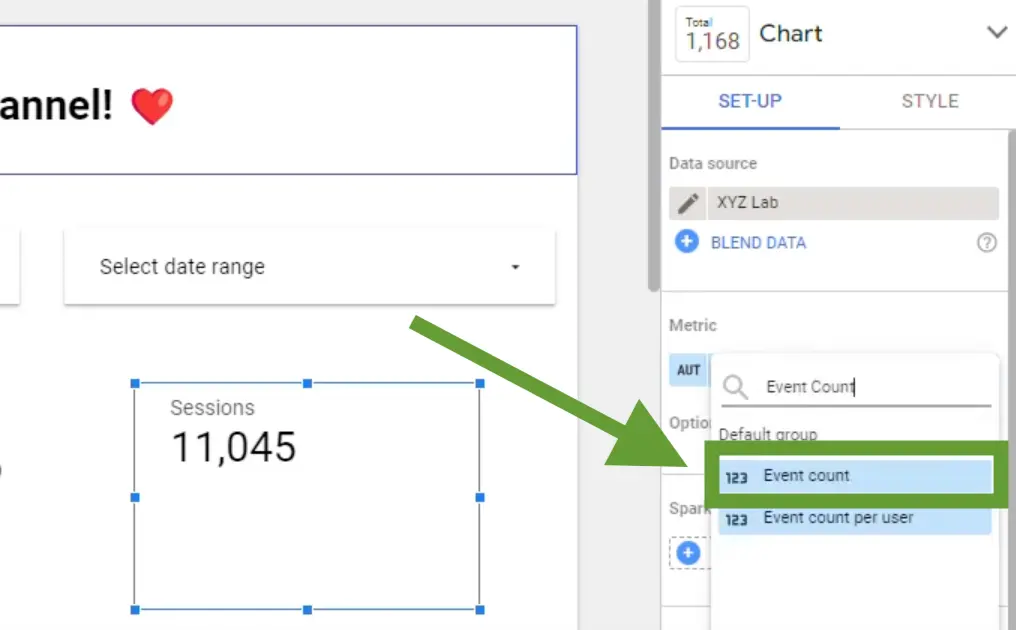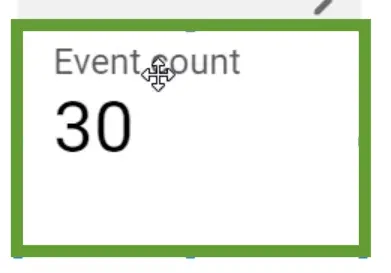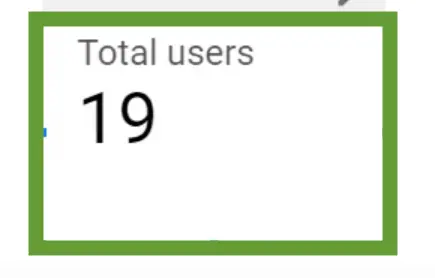Today we are answering one of the intriguing questions we have received, which is 'should you measure your events based on event count or total users and what is the difference between the two?'. This article will explain the difference between event count and total users in regards to measuring events in Google Analytics 4 (GA4) through the Looker Studio. The article will also demonstrate how to measure unique event instances in Google Analytics 4 (GA4). Without further ado, let's get started!
---
Looking for help or support on Google Analytics 4?
---
In case you prefer to watch a video, here's a quick video explanation you can find on XYZ Lab's Youtube Channel!
Topics Covered:
Event Count
To explain the difference between event count and total users with an event filter, we will demonstrate through Looker Studio.
1. Insert a Scorecard and set the metric to 'Event Count'

Event count will tell you how many events are happening on your website. In this case, the visualization will display all the event counts. However, we don't want to see all the events; we want to narrow down to a specific event.
2. Add a filter for a specific event
For example, we want to narrow it down specifically to the event "Browse Courses" on our website. Apply a filter to the scorecard relevant to the Event name as per your Google Analytics (e.g. browse_courses_clicks).


In this case, we can see that there are a total of 30 event counts relevant to "browse_courses_clicks". This means that the 'Browse Courses' button was clicked 30 times. Whenever users come to the website and click on the "Browse Courses" button, this event is counted. Regardless if the same user clicks on the button multiple times, this metric will count every time this action is taken/happens.

Total Users with an Event Filter
Instead of using event count, we can actually use the metric 'Total Users' and apply the event filter we used earlier (i.e. 'browse_courses_clicks' event). Essentially, we want to see only the users who took the specific event 'Browse Courses'.

Now, we can see that there are a total of 19 users who took the action relevant to 'browse_courses_click'.

Event Count vs. Total Users with an Event Filter
If we compare the Event Count and the Total Users relevant to the 'Browse Courses' clicks, the event count amounts to 30 whilst the total users amount to 19. Though both are filtered to the same event 'browse_courses_click', the result is different between Event Count and Total Users.
This is because a single user can perform the event multiple times. For instance, every time any user clicks on the 'Browse Courses' button, the system will count every single event. For example, I can click on the button 5 times, and the event count will count the event happening 5 times.
However, if we use the metric Total Users with the event filter, the system will only count one instance. This metric only counts the unique user who took the action. For example, I can click on the button 5 times, but it will only register it as 1 instance as I am only 1 unique user.
Hence, in this example, there are a total of 30 clicks on the 'Browse Courses' button performed by 19 unique users. There are 19 unique users who clicked on the button, but some of these users clicked on the button multiple times, hence there are more clicks than the number of users.
This is important to know because if you are tracking events such as form submissions, new user sign-ups, pdf downloads, etc, you might want to know the unique number of users who performed the event, rather than the total number of events overall. On the other hand, if you're tracking events such as add to carts, purchases, etc, you might not care as much about the unique number of users but want to know the total number of events overall.
The Event Count means you're counting every instance that this is happening, of which someone can perform the event multiple times. Meanwhile, Total Users with an event filter will give you the unique instances that the event happens (i.e. each unique user who performed the action). So, depending on what information you're looking for, you may want to use one metric or the other.
To summarize:
Event Count: Measures EVERY instance of the event.
Total Users with an Event Filter: Measures UNIQUE instances of events based on users.
For example, if a user clicks on a button 3 times, the Event Count will report "3" while Total Users with event filter will report "1"
